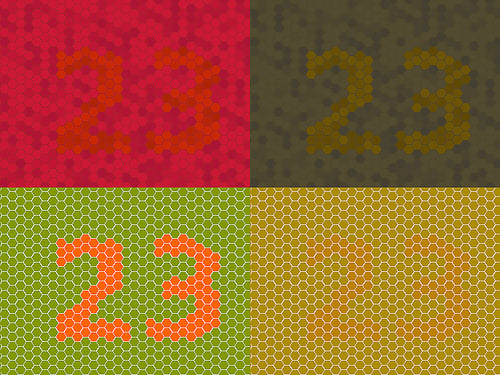New specs may correct the genetic condition known as color blindness.
Throughout our day-to-day lives, most of us use all of our senses constantly. Our nose alerts us of both the delectable and disgusting smells around us, our ears pick up the subtle sounds of nature or the loud sounds of our favorite music, and our eyes allow us to see all of the amazing sights that the world has to offer. However, for some people, not all of these senses may be quite as picture perfect as they would like.
When it comes to your vision, for instance, even people who have 20/20 sight may not see perfectly. According to Prevent Blindness America, an estimated 8% of males and less than 1% of females suffer from color vision deficiency (or, more commonly, color blindness).

This inherited condition, which usually affects males more frequently than females, causes people to have trouble differentiating certain colors, such as blue and yellow or red and green. However, contrary to popular belief, it is very rare for a color blind person to only see the world in shades of grey.
Instead, people with color vision deficiency can see colors, but certain shades and color tones may appear washed out or become easily confused with other colors, all depending on the type of color vision deficiency that the person has. Out of these color combinations, red-green color deficiency is the most common form of color blindness.
However, a new pair of Oxy-Iso lenses made by 2A1 Labs may help to correct the genetic condition known as color blindness―although that was not the original intention of these glasses.
Created by theoretical neurobiologist Mark Changizi and his partner, Tim Barber, the Oxy-Iso lenses were originally created to help boost the vision of health care workers. In 2006, Changizi and his colleagues proposed that color vision actually developed in order to help people discern different emotional states in others, based off of the changes in blood beneath the skin. For instance, blushing when you are in love or becoming red with anger.
Based on that idea, the glasses were designed to enhance two types of blood signals: the level of oxygenation in the blood and the variations in the concentration of the blood. Based on these signals, medical workers could easily use these glasses to find shy veins or to identify bruising that might not be apparent to the naked eye.
However, when Changizi was testing these lenses last fall, he noticed an interesting side effect. Users of the glasses who also had a color vision deficiency started reporting that these glasses also helped in that arena, too. This is because the lenses helped to amplify the hues that were usually muted by color vision deficiencies.
While this is a promising discovery for doctors who are looking into color vision deficiencies and how to improve them, it is not something that the American Academy of Ophthalmology is recommending just yet. They reported that there is danger in boosting certain hues at the expense of others, as well as ignoring the condition itself in order to find a quick fix. Therefore, these glasses should not be used for daily vision.
What do you think about this accidental vision invention? Do you think this is something that could help correct color blindness in the future? Let us know your thoughts in the comments below!
Image: Source